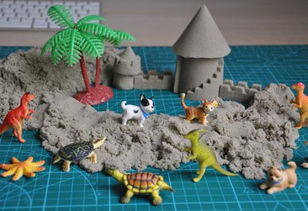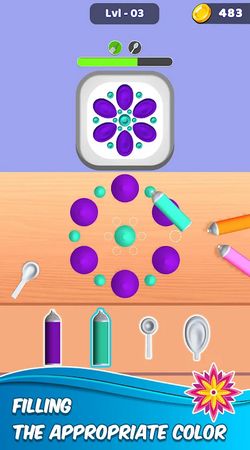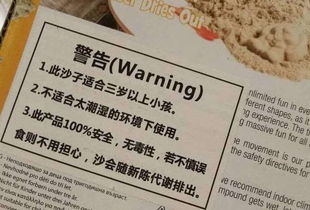DIY Kinetic Sand: A Multi-Dimensional Guide
Are you looking for a fun and engaging activity that can keep the whole family entertained? Look no further than DIY kinetic sand! This unique, non-toxic, and tactile material has become a favorite among children and adults alike. In this comprehensive guide, we’ll explore the ins and outs of creating your own kinetic sand, including its benefits, ingredients, and how to use it in various projects.
Understanding Kinetic Sand

Kinetic sand is a type of sand that behaves like a solid when you press it, but flows like a liquid when you stop. This unique property is due to the presence of a polymer that traps air, creating a soft, moldable texture. Unlike regular sand, kinetic sand is pliable and doesn’t stick to your hands or clothes, making it a great choice for sensory play and crafting.
One of the best things about kinetic sand is that it’s non-toxic and safe for children to play with. It’s made from natural materials, such as sand and a polymer, and doesn’t contain any harmful chemicals. This makes it an excellent alternative to traditional sand, which can be gritty and uncomfortable to handle.
Ingredients for DIY Kinetic Sand

Creating your own kinetic sand is a simple process that requires just a few ingredients. Here’s what you’ll need:
| Ingredient | Quantity |
|---|---|
| Play Sand | 2 cups |
| Water | 1/4 cup |
| Glue (white or clear) | 1/4 cup |
| Food Coloring (optional) | 1-2 drops |
Once you have all the ingredients, mix the play sand, water, and glue in a bowl. Stir the mixture until it’s well combined. If you’d like to add color, add a few drops of food coloring and mix until the desired color is achieved. Continue to add water and glue as needed to reach the desired consistency.
Benefits of DIY Kinetic Sand

DIY kinetic sand offers numerous benefits for both children and adults:
- Sensory Play: Kinetic sand is an excellent sensory tool that can help children develop fine motor skills, hand-eye coordination, and creativity.
- Stress Relief: The tactile nature of kinetic sand can be very soothing, making it a great stress reliever for adults.
- Art and Craft Projects: Kinetic sand can be used in a variety of art and craft projects, such as sculptures, models, and even jewelry.
- Learning and Development: Children can learn about shapes, colors, and textures while playing with kinetic sand.
How to Use DIY Kinetic Sand
Once you’ve created your kinetic sand, there are countless ways to use it:
- Sensory Play: Simply let your children play with the sand to explore its unique properties.
- Art and Craft Projects: Use kinetic sand to create sculptures, models, or even kinetic sand art.
- Science Experiments: Conduct experiments with kinetic sand, such as testing the effects of different liquids or substances on the sand’s consistency.
- Therapy: Kinetic sand can be used in occupational therapy to help children with sensory processing disorders.
Remember to store your kinetic sand in an airtight container when not in use to prevent it from drying out or sticking to the container.
Conclusion
DIY kinetic sand is a versatile, fun, and educational material that can be used in a variety of ways. By following this guide, you can easily create your own kinetic sand and enjoy all the benefits it has to offer. Whether you’re looking for a new sensory play experience for your children or a stress-relieving activity for yourself, kinetic sand is sure to be a hit!
